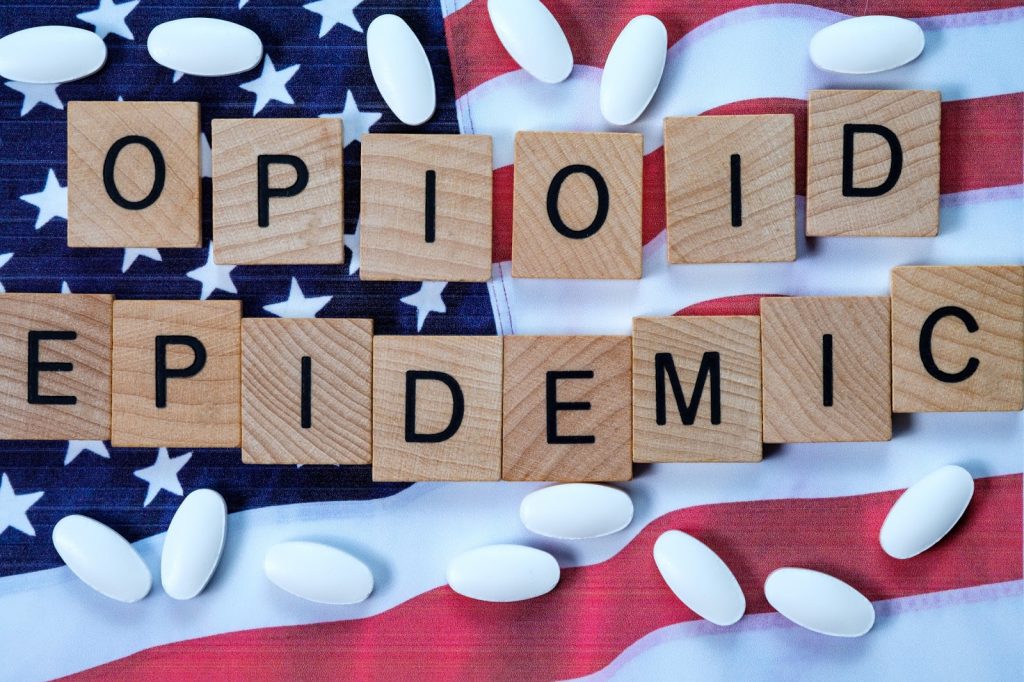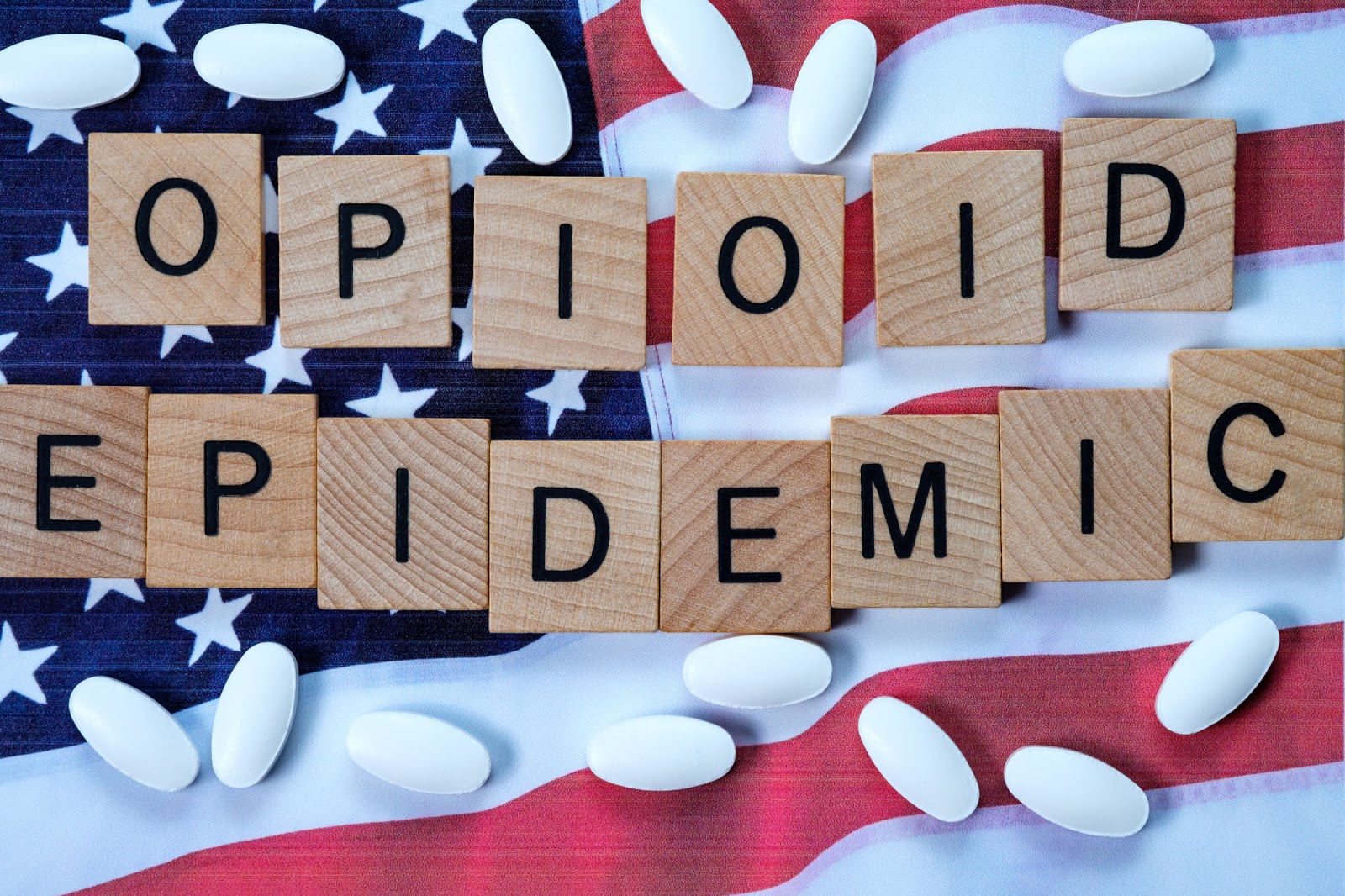While concerns about the class of drugs known as opioids have risen in the last decade, 58 out of every 100 Americans still receive a prescription for these painkillers every year in some form or another. Read on for more information on the opioid addiction, especially useful given the current opioid epidemic.
While useful, their prevalent use and addictive nature lead to millions of cases of abuse. If you’ve come to this article, chances are you have questions regarding yourself or a loved one.
Can you identify opioid addiction signs?
What Are Opioids?
Opioids are a class of natural and synthetic painkillers that work by binding themselves to opioid receptors in the brain. These receptors are part of the body’s reward system and trigger the release of a feel-good endorphin hormone, dopamine.
Normal levels of dopamine release when we experience a pleasurable event such as sex or a particularly delightful piece of cake.
Opiates cause our brain to release an artificial overabundance of dopamine, much more than we need to feel good. This cascade of hormones overrides our pain response, making opioids effective for managing pain. They are particularly helpful where other pain medications fail.
Derived from the poppy plant, there are many legal forms of opioids. These include morphine, oxycodone, codeine, fentanyl, hydromorphone, tramadol, and methadone, among others. The most widely known illegal version of this class is heroin.

Why Are Opioids Dangerous?
In 2017, the US Department of Health and Human Services declared the opioid epidemic a public health emergency, and with good reason.
An estimated 130 people die every day from opiate-related overdoses. Almost 30,000 of those are from legal forms and another 15,000 from heroin derivatives every year.
Opiate addiction is a gradual process and happens for multiple reasons, both physical and emotional.
- The body becomes dependent on the increased levels of artificial dopamine. It quits manufacturing as much of its own, leading to a dependency on the drug for their continued release.
- Drug tolerance grows over time and means users have to consume more of the drug to maintain the needed levels of endorphin release.
- Because of increased tolerance, many people become addicted trying to manage chronic pain issues. Users need higher dosages to effectively control their pain.
- The reward/pleasure effects on the brain cause psychological addiction. You begin to believe you need the drug to feel good mentally and physically.
- The body changes in response to this growing tolerance and addiction, and leads to an actual chemical dependency on the drug. Without it, withdrawal symptoms occur.
At this point, the drug that was once meant to manage pain now manages the person, and they have little to no control in the choice to continue its use.
What Are Opioid Addiction Signs?
Opiate addiction comes with very noticeable side effects, especially the longer the abuse goes on.
Opioids cause drowsiness, nausea, slurred speech, and coordination issues even with recommended use. These will become more pronounced with higher and continued dosage.
Opiate addicts will begin to choose the high over daily responsibilities. They make poor decisions and forget about or abandoning obligations. Job performance will likely suffer, and you may notice they seem to be experiencing financial issues. They will lose interest in activities they once loved, perhaps changing friends or hanging out with new people while avoiding friends and family.
Their physical habits may change. They may stop paying attention to self-care like changing clothes and showering and may start sleeping at odd hours. They may eat much less or more, depending on their mood.
Mood swings are common, with depression, anxiety, and general apathy or decreased motivation. You’ll see erratic behavior, with highs of euphoria followed by agitation and irritability.
They may go from being energetic, talking rapidly and saying things that may not make sense, to crashing, becoming anxious, or angry.
One man recalls a restaurant dinner with his sister, addicted to hydrocodone at the time. She spent the first half of the meal talking and laughing loudly before falling asleep face first into her dinner plate.
What Are The Signs of an Opioid Overdose?
Besides the obvious life upheaval the above-mentioned symptoms would have, the terrifying prospect for an addicted loved one is an opioid overdose.
As the addict uses more and more of the drug to gain the same results, the opportunity for overdose grows. If access to the drug becomes harder, with new restrictions on their use implemented, addicts are likely to turn to illegal forms like heroin and increase their risk of accidental overdose.
An opiate overdose will cause:
- Slow and irregular breathing
- A shallow and irregular (or no) pulse
- Unconsciousness
- Constricted pupils with the eyes rolling back into the head
- Unresponsiveness and inability to wake
If your loved one is an opioid addict and you find them in this state, immediately call 911. Minutes count in this situation. When people survive it’s generally because someone was there to respond and administer help.
Treatment for Opioid Addiction
Whether it’s an overdose, some other kind of traumatic wakeup call or the stark realization that there is a problem, treatment for opiate addiction needs to be multifaceted to reduce the chance of relapse.
- Medical detox, in which professionals administer certain drugs to help negate withdrawal symptoms.
- Extended evaluation and monitoring as detox ends. This ensures continued support of physical symptoms that may arise.
- Family therapy to encourage loved ones to participate in the process. This heals outstanding issues resulting from previous symptomatic behaviors, leaving no emotional triggers to prompt relapse.
- Individual therapy, including cognitive behavioral therapy, to understand negative tendencies, triggers, coping mechanisms and thought patterns that might contribute to addiction or relapse.
- Additional supportive endeavors, such as new hobbies, spiritual guidance, and nutrition and wellness. These create a support system to fall back on in moments of distress.
Drugs like methadone and buprenorphine can help with physical withdrawal symptoms. The largest factor for relapse, however, is social support, or the lack thereof.
How Can You Help an Opioid Addict?
If someone you know and love is an opiate addict, or the rehabilitation process has already begun, there are some steps you can take to help the journey.
The first step is to avoid addiction in yourself or others completely.
- Make sure that any opioid prescriptions are in a secure place, away from places children or visitors to your home might find them. Opiates should not be in places they can be easily discovered like medicine cabinets or nightstands.
- Don’t share your prescriptions with others. It’s estimated that half of first-time users received the medication from a family member. If someone you know is suffering from an issue, encourage them to see a physician who can prescribe an appropriate dose.
- If you have extra opioids from a prescription, do not store them or throw them away in the trash. Make sure they are properly disposed of.
If an addiction has already begun, and you’re looking to offer support, you must understand the enormity of the situation. Depending on the extent and duration of drug abuse, the person may have to rebuild their entire life.
Encouraging and participating in the development of new, healthy behaviors is paramount. Knowing that relapse statistics are high and offering support despite setbacks is also critical.
Although you might be dealing with emotional issues resulting from a loved one’s drug abuse, it is important during recovery that your only role is that of support. Avoid criticism and viewpoints that make them feel like a bad person for their addiction. Understand that no one wants to be an addict, and anyone is susceptible.
However, it’s also important not to enable further related behavior. Drug use alters an addict’s brain, so make sure you are someone they can count on to see the situation fairly and clearly.
Opioids – Helping Versus Hurting
Opioids shouldn’t be vilified – when used safely under the supervision of a healthcare professional, they are incredibly useful and efficient for pain management.
If you or a loved one has an opiate prescription, however, knowing opioid addiction signs can mean the difference between a long and drawn out struggle and a quickly noticed and dealt with problem.
Take measures to avoid an opioid addiction from starting by properly storing and disposing of prescriptions. Ensure that you follow and do not exceed the dosing recommendations given to you by your healthcare provider.
If you notice signs of an addiction, bring it up immediately in a safe and loving manner. Be firm but gentle as you help your loved one come to terms with their problem.
Educate yourself so you can be a source of help and support. Understand that everyone is vulnerable to the effects and subsequent abuse of opioids. Your reaction to the problem helps determines the outcome.
If you or someone you know has an opioid addiction, find out how our programs can help you.

